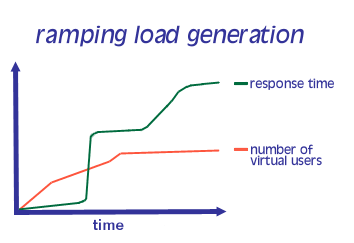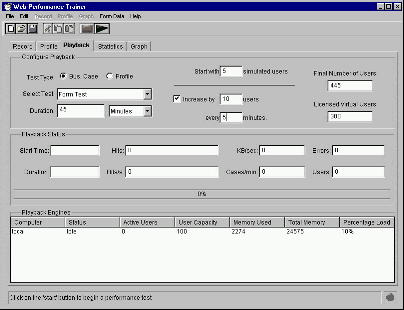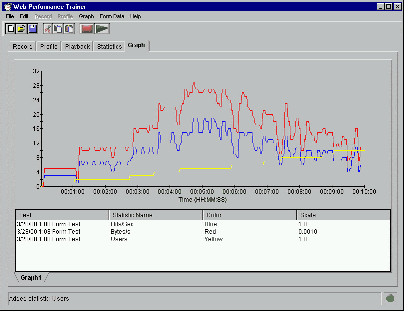Product Comparisons
Microsoft's Web Application Stress Tool
A frequent question is how does Web Performance Load Tester™ compare with Microsoft's Web Application Stress Tool? At the most basic level, WAS is a free, unsupported tool, while Web Performance Load Tester™ is a supported multi platform product with technical support and regular upgrades. In the following sections are a feature-by-feature comparison:
Ramping Load Generation
With Web Performance
Trainer you can dynamically vary the number of virtual users hitting
your site, so you can see how the performance varies according
to load. WAS will only generate a static load, so you have to
manually create a test for each number of virtual users you want
to test, and create a graph by hand.

Test Multiple Web Servers/Ports
Modern,complicated web sites will often make use of multiple web servers. What looks to be a single web page might contain calls to application servers, or separate web servers to handle images, or even calls to different ports on the same web server. Web Performance Trainer™ allows you to record and test web pages that contain these complex configurations, even editing the recorded scripts to use different ports or web servers. WAS was designed to test a single IIS instance running on a single computer at a single port. If you need to test something more complicated you're out of luck.
Use any Web Server or Operating System
WebPerformance Load Tester™ works with any web server, including IIS, Apache, and Netscape. WAS only works with Microsoft's IIS. WAS only runs on Microsoft operating systems, while Web Performance Load Tester™ supports Linux, Unix, and Solaris in addition to Windows.
Realtime Performance Statistics Display
WebPerformance LoadTester™ allows you to view performance statistics as the test runs, so you can know immediately if something's wrong without having to wait until the end of an hour test. WAS only gives you a dialog with a "Stop" button, and no indication at all if the test is working or not.

Three Levels of Statistics
When recording, Web Performance Load Tester™ automatically divides the session into web pages and URLs. This gives Trainer the ability to then group playback statistics into a transaction, web page, or individual URL level. WAS records only URLs, so you have to group the URL requests into higher level entities by hand. The result is you can only see statistics by the URL or "group", so if you want statistics at the web page or transaction level you have to figure it out for yourself.
Flexible Load Modeling
Web Performance Load Tester™ define transactions that are unique to your business, and allows you to group them in new ways to simulate existing or new load patterns. We call these "business cases". You can run multiple business cases at the same time, each with different characteristics. For example, you can have 20% of your users connect at DSL speeds, while 80% connect at the speed of a 56K modem. WAS only allows one test to run at a time, making it impossible to support multiple simultaneous transactions.
View Results

Web Performance Load Tester™ has a graph built right in, so you can quickly get a picture of your test results. WAS only supports crude text listings.